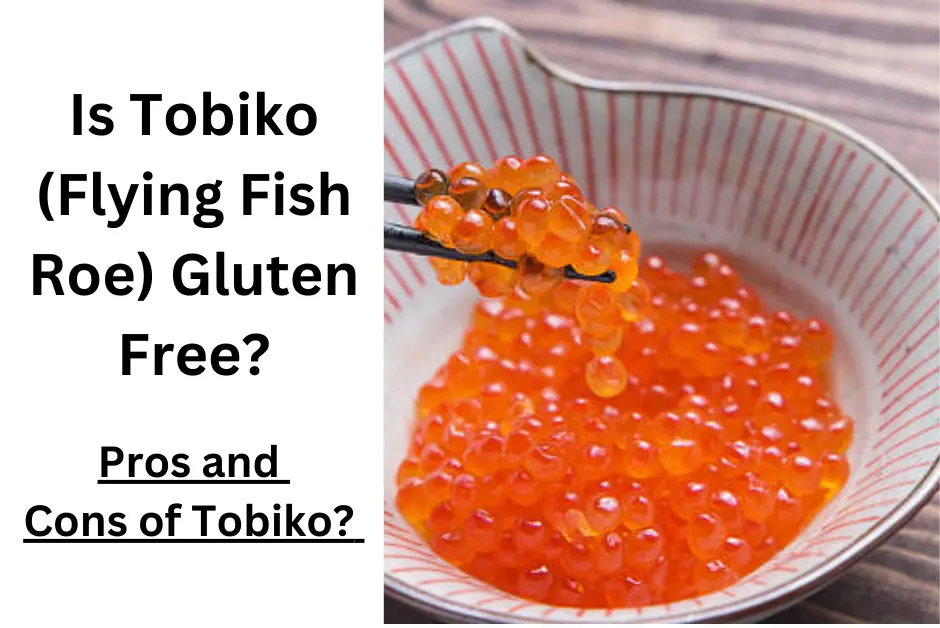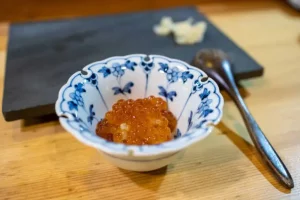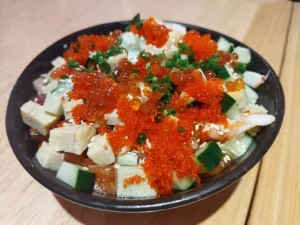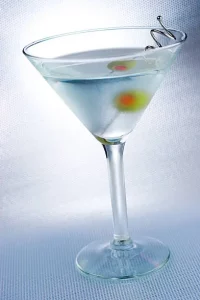Is Tobiko Gluten Free? (Flying Fish Roe)
The answer to “Is Tobiko Gluten Free?” is Yes, tobiko is gluten-free. I personally have tried it on sushi rolls and salads and can attest to its deliciousness! Its crunchy texture and slightly sweet flavor make it an excellent topping on all types of dishes. Plus, with its nutritional value and low-calorie count, tobiko is a great choice for those looking to incorporate more seafood into their diets.
It is also versatile and can be used in a variety of recipes ranging from sushi rolls and sashimi to salads and appetizers, making it perfect for any occasion.
Find out,
What is Tobiko?
Tobiko, which translates from Japanese as “flying fish roe,” is the egg mass of a species of flying fish. It is often used as an ingredient in Japanese and other East Asian cuisines. The eggs are typically small and range in color from orange to red or black, depending on the type of flying fish they come from and their degree of maturity.
Is Tobiko Healthy?
Eating tobiko can provide numerous potential health benefits. For one thing, it is high in protein—a single serving contains around 14 grams of protein. It also contains omega-3 fatty acids which help support heart health and reduce inflammation.
Additionally, tobiko is rich in vitamins A and D, both of which are essential for healthy skin and immune system functioning. Finally, the tiny flying fish eggs contain selenium and zinc, both of which are important for maintaining strong bones and a healthy metabolism.
Is Tobiko Vegan?
Unfortunately, tobiko is not vegan as it comes from a species of fish. Those who follow a vegan diet should look for suitable alternatives to tobiko.
Also see: Is molino flour gluten free for daily use?
Tips for Preparing and Serving Tobiko Safely on a Gluten-Free Diet
There is a list of tips for preparing and serving Tobiko for a gluten-free diet. following this will help you on top and please your guests or even yourself.
- Look for labels that specify “gluten-free” when buying tobiko.
- Ask your server if the restaurant is using gluten-free soy sauce in their recipes.
- Avoid cross-contamination by using separate utensils and plates when preparing tobiko dishes.
- Double-check ingredients (e.g., sauces and dressings) for hidden sources of gluten.
- Rinse tobiko before consuming to remove any remaining pieces of fish bones.
- Serve tobiko dishes on individual plates so that everyone can enjoy the dish safely.
- It is also important to ask questions when eating out in restaurants, as tobiko may be used as a garnish on dishes that contain gluten.
What are the Pros and Cons of does tobiko have gluten?
Tobiko is a type of seafood that has become increasingly popular in recent years due to its unique flavor and texture. I will share the pros and Cons of the Tobiko dish while keeping in mind the gluten-free characteristic.
| Pros | Cons |
|---|---|
| Tobiko is a good source of essential vitamins and minerals | Tobiko can be expensive compared to other types of fish roe or eggs |
| Tobiko contains omega-3 fatty acids which are beneficial for heart health | Due to its small size, it can be difficult to remove from the dish without damaging the food |
| Tobiko adds an interesting texture and taste to many dishes | Those with seafood allergies should take caution when consuming tobiko |
| Tobiko may not be easily accessible in some areas | |
| Some people may not enjoy the taste or texture of tobiko |
Nutritional information for is tobiko gluten-free
Tobiko, also known as flying fish roe, is a type of seafood that is packed full of essential nutrients and minerals.
| Nutrient | Amount per 4 ounces |
|---|---|
| Calories | 74 |
| Total Fat | 3.3 g |
| Saturated Fat | 0.9 g |
| Cholesterol | 43 mg |
| Protein | 8.6 g |
| Vitamin A | 36% DV |
| Vitamin D | 9% DV |
| Calcium | 2% DV |
| Potassium | 2% DV |
| Zinc | 1% DV |
| Omega-3 Fatty Acids | 2.2 g |
| Dietary Fiber | 2.8 g |
| Carbohydrates | 2 g |
| Gluten-free | Yes |
Note: DV = Daily Value based on a 2000-calorie diet.
Listing the recipes with tobiko
Tobiko has become a popular ingredient in many types of dishes due to its unique flavor and texture. From sushi rolls and sashimi to salads and appetizers, tobiko can be used in a variety of recipes that are sure to please any palate. Here are some delicious recipes that use tobiko as an ingredient. This also covers Is Tobiko Gluten Free?
Tobiko Sushi Roll –
This classic sushi roll is made with nori seaweed, vinegar-seasoned rice, and tobiko roe. It’s a colorful dish that looks great on the plate and tastes even better.
Tobiko Martini –
A twist on the traditional martini, this cocktail features vodka mixed with tobiko roe for an interesting and unique flavor. The roe adds a subtle crunch to the drink as well, making it a fun and interesting cocktail for any occasion.
Tobiko Salad –
This refreshing salad features tobiko roe mixed with cucumbers, tomatoes, onions, and a light vinaigrette dressing. It’s simple yet flavorful, perfect for lunch or dinner.
Tobiko Deviled Eggs –
Tobiko roe is used instead of yolks in this delicious deviled egg recipe. It’s an appetizer that looks great on the plate and tastes even better.
Tobiko Ceviche –
This Peruvian-style dish combines fresh seafood with citrus juice, herbs, and tobiko roe for a unique flavor. It’s a savory dish that is sure to please the palate.
These are just a few of the many recipes that feature tobiko. Whether you’re looking to make something simple or something more complex, tobiko can be used in an array of dishes to add flavor and texture. With a little creativity, anyone can enjoy the unique taste of tobiko in their cooking.
Alternatives to Tobiko:
For those who cannot consume tobiko for any reason, there are several substitutes that can be used in its place. These include salmon roe, caviar, capelin roe, and even smaller types of shrimp such as baby shrimp or shrimp paste.
Each of these ingredients offers its own unique texture and flavor which makes them suitable replacements for tobiko in most recipes. Additionally, they are typically cheaper than tobiko so they may be more cost-effective.
What to Look for When Purchasing Tobiko
When purchasing tobiko, it is important to look for products that have been labeled “gluten-free”. Additionally, it is important to pay close attention to the ingredients list and make sure that there are no added preservatives or additives. Finally, check for a “use by” date as this will ensure that the product is still fresh and safe to consume.
Marky’s Tobiko Wasabi
Marky’s Tobiko Wasabi is one of the most popular brands of tobiko available on the market today. Its unique flavor combines wasabi with the traditional taste of tobiko to create an interesting and delicious dish. The bright green color also adds a unique visual element to any meal. Marky’s offers their Tobiko Wasabi in 4 oz cans which are conveniently packaged and easy to store at home.
Final Thoughts
Overall, tobiko can be a delicious and nutritious addition to any meal. With its rich flavor and nutritional value, it is an excellent choice for both vegan and gluten-free diets alike. As with all foods, it is important to ensure that the ingredients being used are safe and suitable for one’s dietary needs. I hope I have answered the question Is Tobiko Gluten Free?
Additionally, when purchasing tobiko always look for products that have been labeled “gluten-free” as well as a recent “use by” date. Finally, Marky’s Tobiko Wasabi is one of the most popular brands on the market today and offers an interesting twist on traditional tobiko dishes.
With these tips in mind, anyone can enjoy the unique flavor and texture of tobiko safely and confidently. Yu can share your experience with tobiko gluten free in the comment section.














